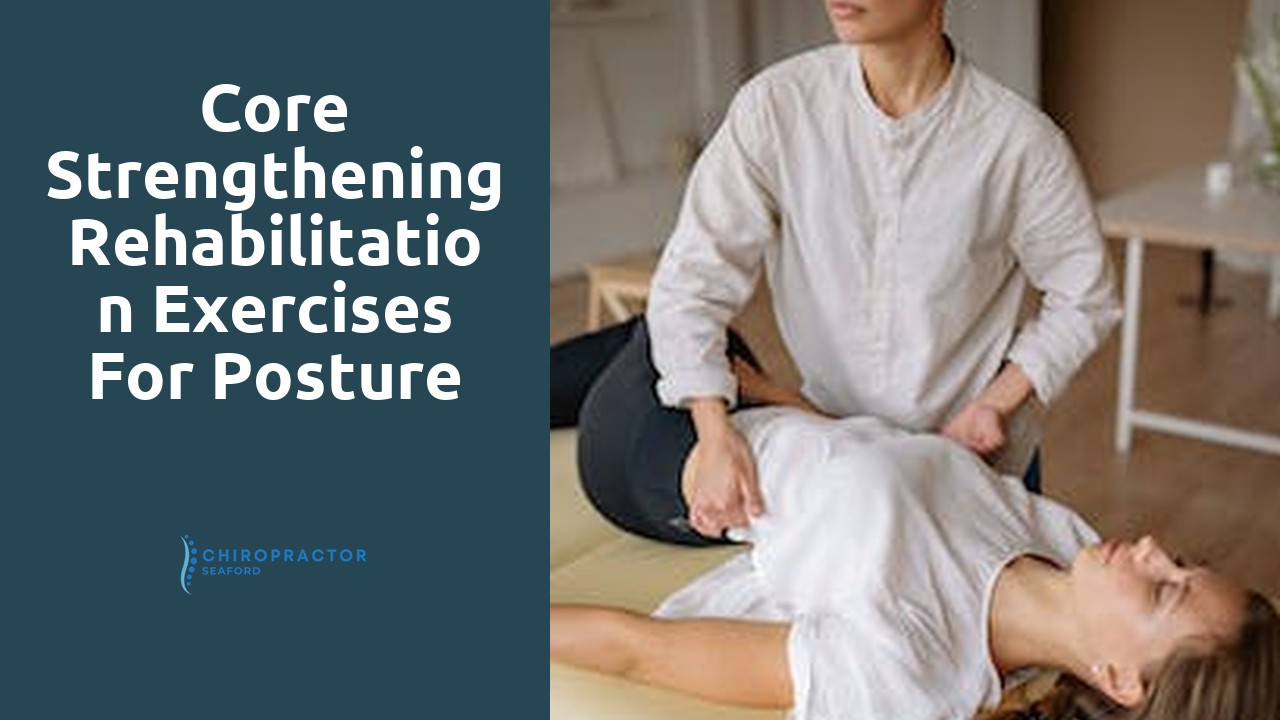
Core Strengthening Rehabilitation Exercises for Posture Correction Seaford
Table Of Contents
Understanding the Importance of a Strong Core for Better Posture
A strong core is the foundation for better posture. It not only helps to support the spine but also maintains the body's alignment. When we talk about the core, we are referring to the muscles that make up the abdomen, lower back, hips, and pelvis. These muscles work together to provide stability and strength to the body, which in turn promotes good posture.
Having a strong core is essential because it helps to distribute the weight of the body evenly. This prevents undue stress on certain areas of the body, such as the spine, which can lead to poor posture. When the core muscles are strong, they provide the necessary support to maintain a natural alignment of the spine, reducing the risk of slouching or hunching forward. Additionally, a strong core helps to improve balance and coordination, allowing for more efficient movement and preventing strain on other muscles and joints.
Unlocking the Secret to Correcting Posture through Rehabilitation Exercises
Poor posture is a common problem that affects many individuals, leading to discomfort, pain, and even long-term health issues. However, the secret to correcting posture lies in the power of rehabilitation exercises. By understanding the importance of a strong core, individuals can unlock the key to improving their posture and overall well-being.
Rehabilitation exercises specifically target the core muscles, which include the abdominals, back, and pelvic floor. These exercises not only strengthen the core muscles but also improve body awareness and stability. By incorporating these exercises into a daily routine, individuals can gradually correct their posture and prevent future problems. Whether it's through simple exercises like planks or more dynamic movements like Pilates, the secret to correcting posture lies in the commitment to rehabilitation exercises that focus on strengthening the core.
Strengthening Your Body's Foundation: Posture Correction Tips and Techniques
Maintaining good posture is crucial not only for our physical appearance but also for our overall health and wellbeing. Poor posture can lead to a variety of issues, including back pain, muscle imbalances, and even difficulties with digestion and breathing. That is why it is essential to strengthen our body's foundation through posture correction tips and techniques.
One effective technique for improving posture is to focus on strengthening the core muscles. The core muscles, including the abdominals, obliques, and lower back muscles, provide stability and support to the spine. By engaging and strengthening these muscles, we can help to maintain proper alignment of the spine and improve our posture. Some core strengthening exercises that can aid in posture correction include planks, stability ball exercises, and Pilates. These exercises not only target the core muscles but also engage other muscle groups such as the glutes and shoulders, creating a strong foundation for better posture.
The Road to Better Posture: Exploring Core Strengthening Rehabilitation Exercises
To achieve better posture, it is important to focus on strengthening the core muscles. The core muscles play a vital role in providing support to the spine and maintaining proper alignment of the body. By targeting these muscles through rehabilitation exercises, individuals can improve their posture and reduce the risk of developing back pain or other musculoskeletal issues.
One effective core strengthening exercise is the plank. This exercise requires individuals to support their body weight on their forearms and toes, while keeping their body in a straight line. The plank engages the abdominal muscles, back muscles, and glutes, helping to improve overall core stability and strength. Other exercises that target the core muscles include the bridge, Russian twists, and the bird dog. By incorporating these exercises into a regular workout routine, individuals can gradually build a strong core, leading to better posture and improved overall physical well-being.
Building a Solid Base: Core Strengthening Exercises for Posture Correction
Building a strong core is essential for maintaining correct posture and preventing back pain. It serves as the foundation for our entire body, providing stability and support to the spine and pelvis. By engaging the muscles in the core, we can improve our posture and alleviate strain on the back and neck.
There are several effective exercises that can help strengthen the core and improve posture. Planks are one of the most beneficial exercises for targeting the deep core muscles. By holding a plank position, with the body straight and supported by the forearms and toes, the core muscles are engaged and worked to maintain stability. Other exercises such as Russian twists and bird dogs also target the core muscles and promote better posture. With consistency and proper form, incorporating these exercises into a regular fitness routine can lead to significant improvements in posture and overall strength.
Achieving Proper Posture with Targeted Rehabilitation Exercises
Achieving proper posture is essential for maintaining a healthy and balanced body. One effective approach to correcting posture is through targeted rehabilitation exercises. These exercises focus on strengthening the core muscles, which form the foundation of our body's posture and stability.
By engaging in targeted rehabilitation exercises, individuals can improve their overall posture and reduce the risk of developing musculoskeletal issues. The exercises typically involve movements that target the core muscles, including the abdominals, lower back, and pelvic region. This consistent and focused workout regimen helps to strengthen these muscles, enhancing their ability to support the spine and maintain proper alignment. As a result, individuals can experience improved posture and a reduction in common issues such as back pain, hunched shoulders, and rounded spine.
Related Links
Balance and Coordination Rehabilitation Exercises for Falls Prevention SeafordLower Body Rehabilitation Exercises for Enhanced Strength Seaford
The Power of Meal Planning: Tips for Healthy Eating on a Budget Seaford
Mindful Eating: Techniques for a Healthier Relationship with Food Seaford